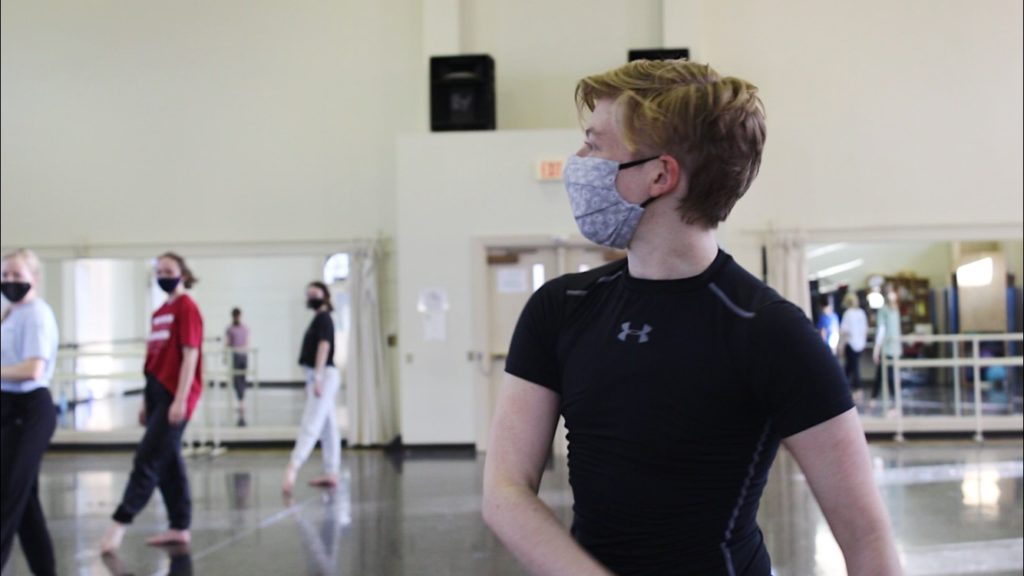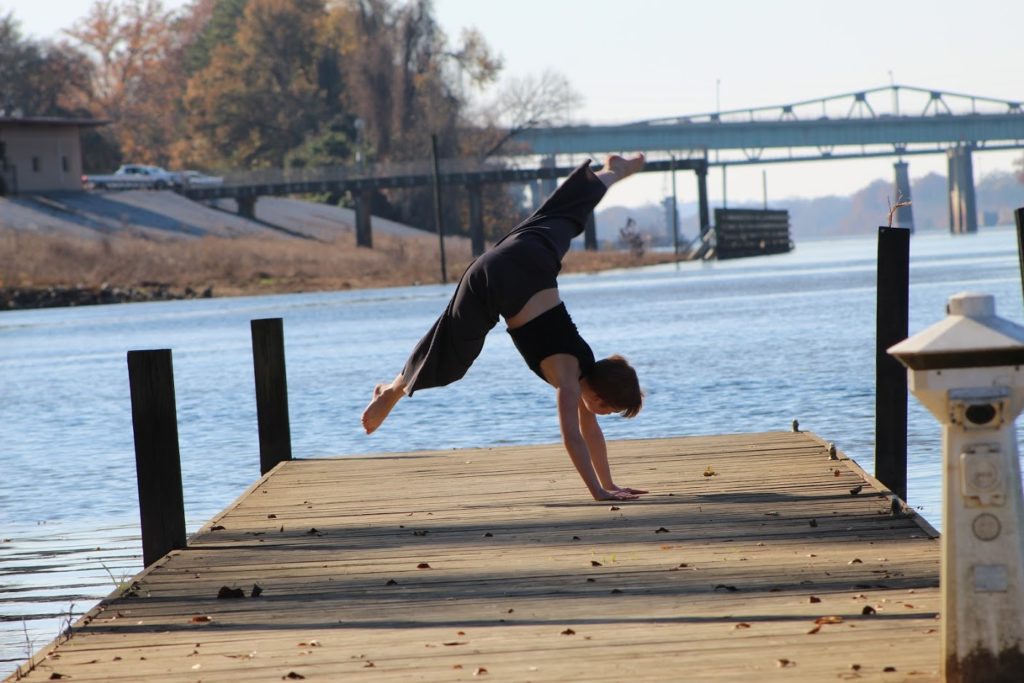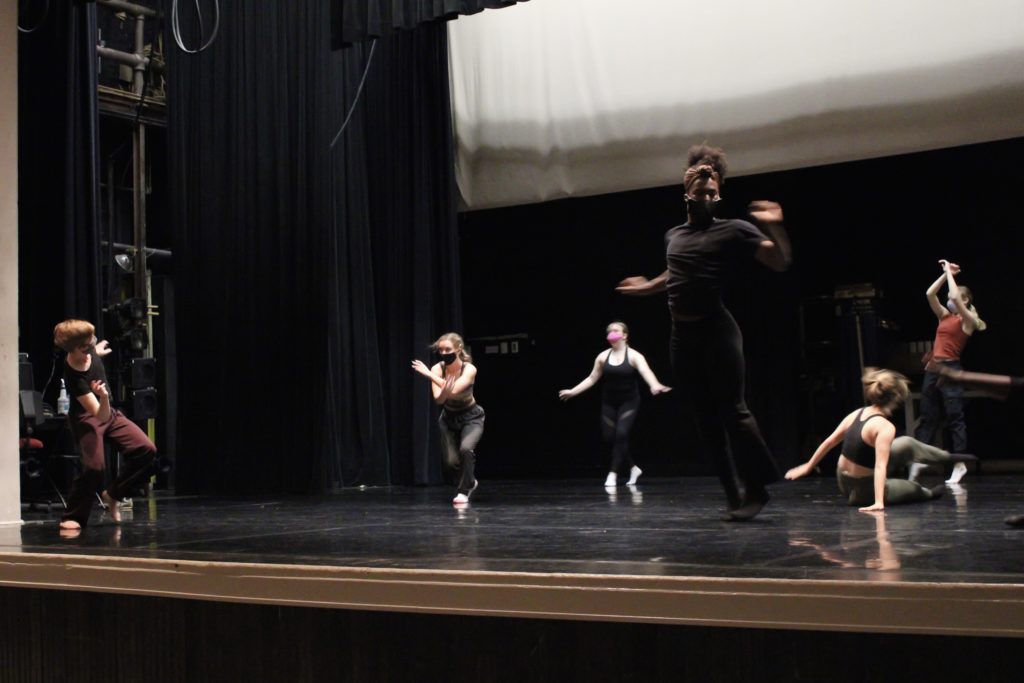By Dr. Fen Kennedy
Featured in DanceTeacher
March 31, 2021
The door of my office has a bright blue Post-it note with my pronouns on it: “they/them.”
It was one of the first things I did when I came to the University of Alabama in 2019, because I wanted people to know that I was here. I wanted people who thought of nonbinary identity as a fad or a phase, or even a mental illness, to accept that some of us are professionals and hold PhDs. I wanted every LGBTQ+ student wandering the hallways to know that I was accepted, I was valued and that I wasn’t afraid. That I was someone they could trust. That I—and we—belong here.
When I think of my decision to come out as nonbinary, it’s a lot like my decision to move from England to the U.S. I was doing alright in my home country. I was dancing in companies and touring freelance, and I had a community of friends. But I couldn’t see a future for myself. I never found the shining sense of homecoming that I’d discovered in New York City attending Martha Graham Dance Company summer intensives, and I didn’t light up planning for what I could do with my career and my life.

I risked a lot when I decided to become a U.S. graduate student, including the possibility that I’d never get a job and I’d have to go back to the U.K. But embedded in the risk was a deep sense of rightness and joy that hasn’t changed after six years of living in this country, or after five years of being out as nonbinary, or after three years since gender-affirming surgery.
Being an openly transgender professor (not all nonbinary people identify as transgender, but I do)is like walking a tightrope every day. I live in a country (and a world) where a lot of people think I am fundamentally wrong about the nature of my being, and yet here I am setting myself up as an educator. Of the tenure-track jobs I was offered, I chose the University of Alabama firstly because I fell in love with the program and its community, but also because they were the most welcoming of my identity. Unlike elsewhere, where students laughed at my pronouns or where I was grilled for hours about whether or not I could teach Republicans, or make “nonpolitical” works, here, the whole of myself is seen as a valuable addition to the department. I produce research on queer pedagogy, I make dance works about finding community, and my life experience is allowed to feed into my work and my teaching.
The tightrope, of course, never goes away. Despite the welcoming environment, I do not know what would happen if a student or parent complained about my presence here, and I take steps in my teaching to control for that risk. For example, I put it in writing that students can call me any pronoun that feels right to them, and I never correct anyone who misgenders me at work: I don’t want to be accused of “forcing” my beliefs onto anyone. It’s not ideal, but it feels necessary in order to keep myself safe. I teach technique, choreography, critical theory and history, and I make it especially clear in history where I am sourcing my facts from, and when I stray into the realm of my own hypothesis about how those facts can be interpreted.

Ironically, my students seem to care the least about my gender. Do I keep classes engaging? Do I grade fairly? Are they doing their solo well? Can I help them get a job? They’re so much more concerned with our shared experience of dancing and learning that my gender stops being a big deal, which is how I wish it were all the time.
Unfortunately, I have also encountered transphobia: people who will not reply to my emails because my pronouns are in the signature; a student who gave me zeros all down my annual review and said my classes were a waste of time; a woman who tried to drive into me with her car. For many people, I’m the first nonbinary person they’ve ever met, which means there’s a lot of awkwardness and a lot of getting it wrong—even if they don’t have any bad intentions.
Sometimes, my presence has forced my department to confront habits or biases they’d never been aware of: We have a men’s dress code and a women’s dress code for dance classes, but what should I wear? What about the frequent use of “ladies and gentlemen” to introduce events? In those situations, I try to have an alternative ready that includes me, without alienating anyone else. My commitment to being comfortably and confidently out allows me to make our community more open to everyone, and my department has been incredibly accepting of how I do that. I feel both incredibly lucky and incredibly sad knowing that not all nonbinary professors are able to be so vocal about inclusion.

Dance has a history of exclusion, but also of making space. We are intimately connected with the creativity and complexity of our lives, and that can be a powerful tool for empathy if we recognize that same creativity and complexity in others. Dancing helped me navigate dysphoria and find joy in my body, even when that body was being actively excluded or marginalized. When I dance, I know that I am right with myself, and that we all deserve to feel right and be welcome. When I teach, I remember my own vulnerability and use it to offer grace and understanding to my students, many of whom are struggling particularly hard with their own vulnerability right now.
The Post-it note on my door tells people about my difference. My teaching, and my dancing, explain that we are nevertheless connected by our shared joy in movement, by our curiosity and our desire to grow. We all belong here.